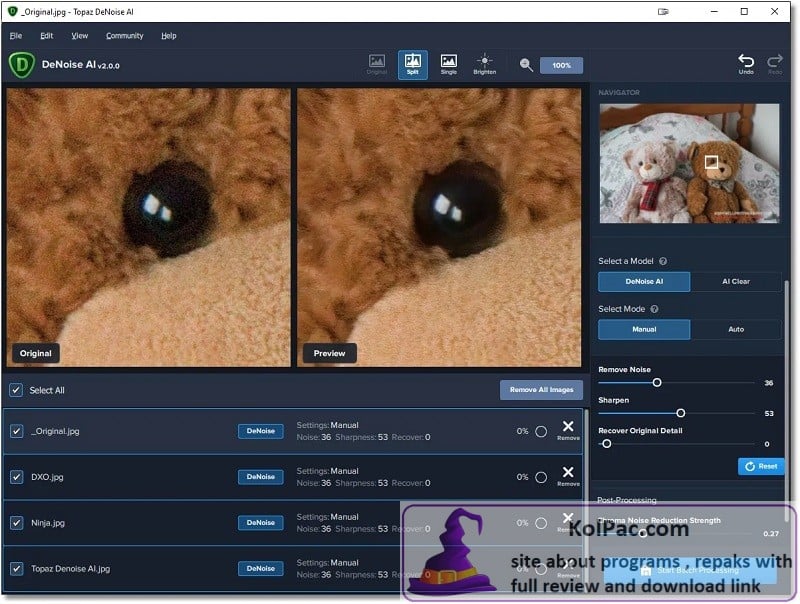


Noise reduction can be applied to edited images saved in the most common file formats, or you can load Raw files into the software and export them as DNGs for Raw processing in your favourite software.
DOWNLOAD TOPAZ DENOISE AI MANUAL
You can opt for Auto, where DeNoise AI selects the settings it calculates are most appropriate for the image, you can go for manual control or a combination of the two. The main control panel can be found on the right-hand side of the interface and is broken up into a thumbnail and navigator, AI Model selection, setting and Post-Processing which provides additional controls for refining noise reduction before saving. Here, the Comparison View shows the original image alongside the results from the three AI Models so you can judge which is most suitable for the image you’re editing. View options include a Brighten button that lightens darker parts of the image temporarily to view noise reduction in these areas more easily, zoom allows you to zoom in and out of images, Original allows you to see the original image temporarily and the View control that allows you to change the view for comparison between the before and after. Everything is kept clutter-free with only the controls you need visible – below the main menu that you rarely need to use are several viewing controls that make results clear to see. (Image credit: James Abbot)ĭeNoise AI, like other Topaz Labs photography software, features an intuitively laid out user interface that makes removing noise incredibly easy. DeNoise AI makes it quick and easy to reduce noise in images and can result in sharper results than those possible with Lightroom and Adobe Camera Raw.


 0 kommentar(er)
0 kommentar(er)
